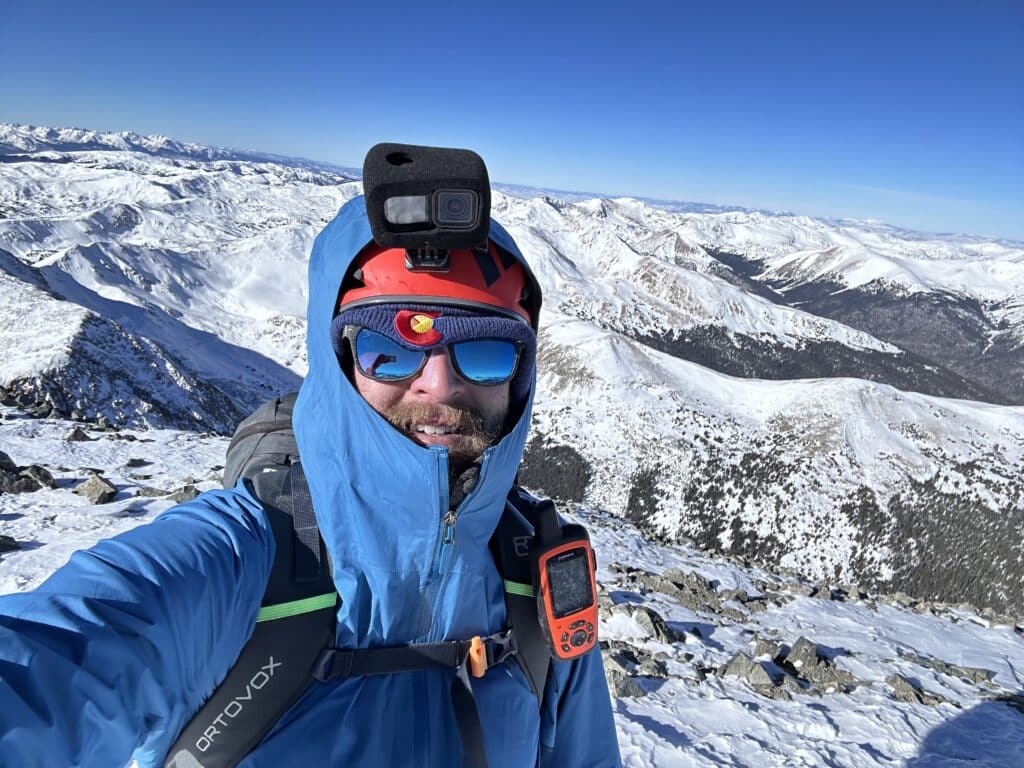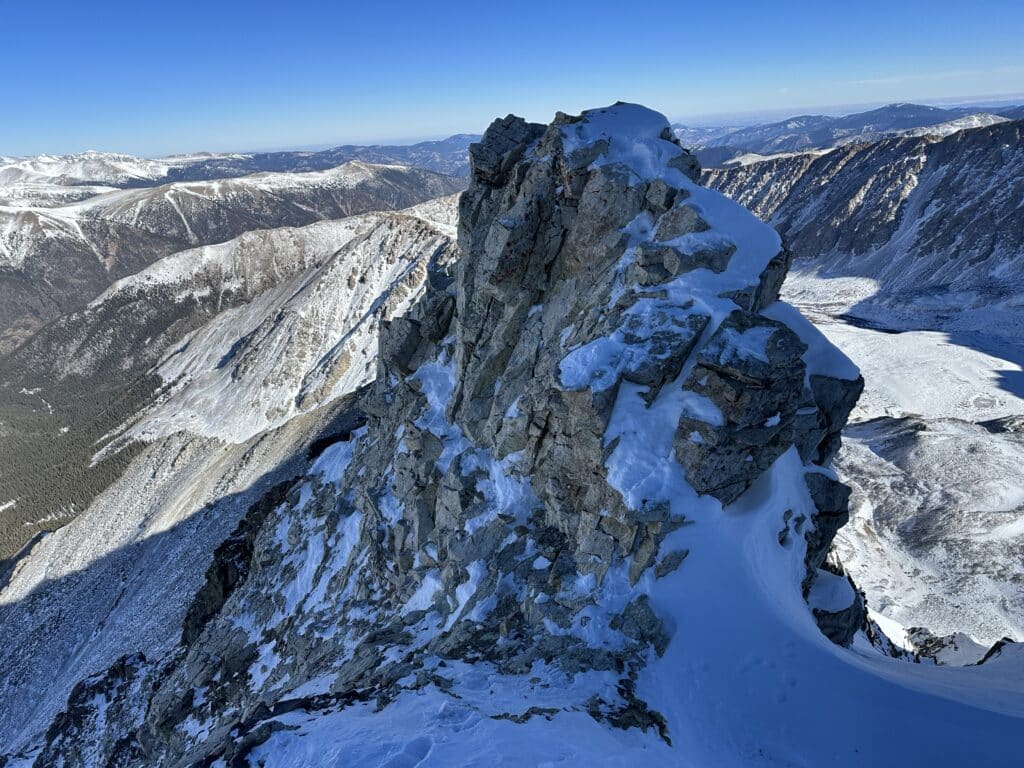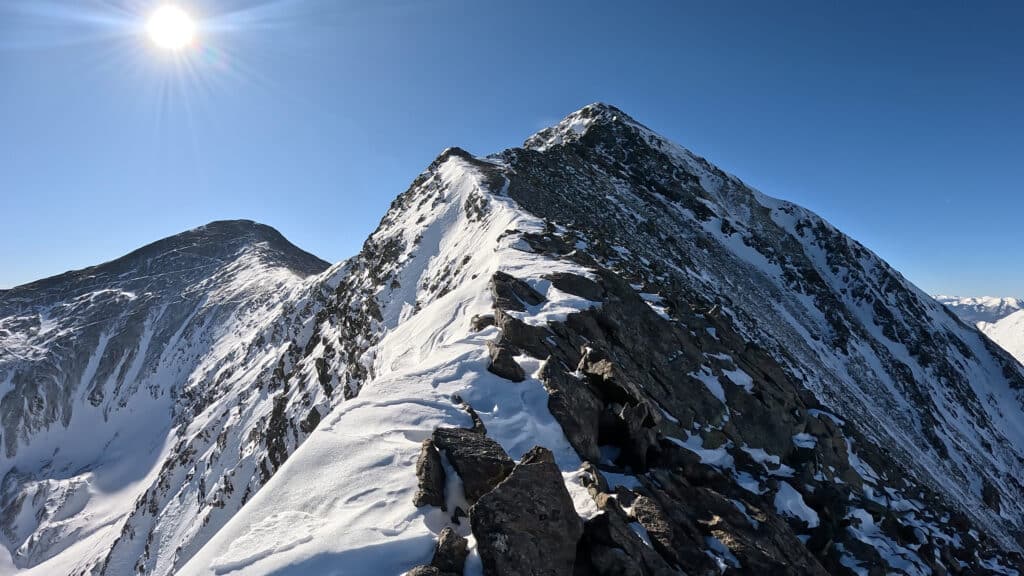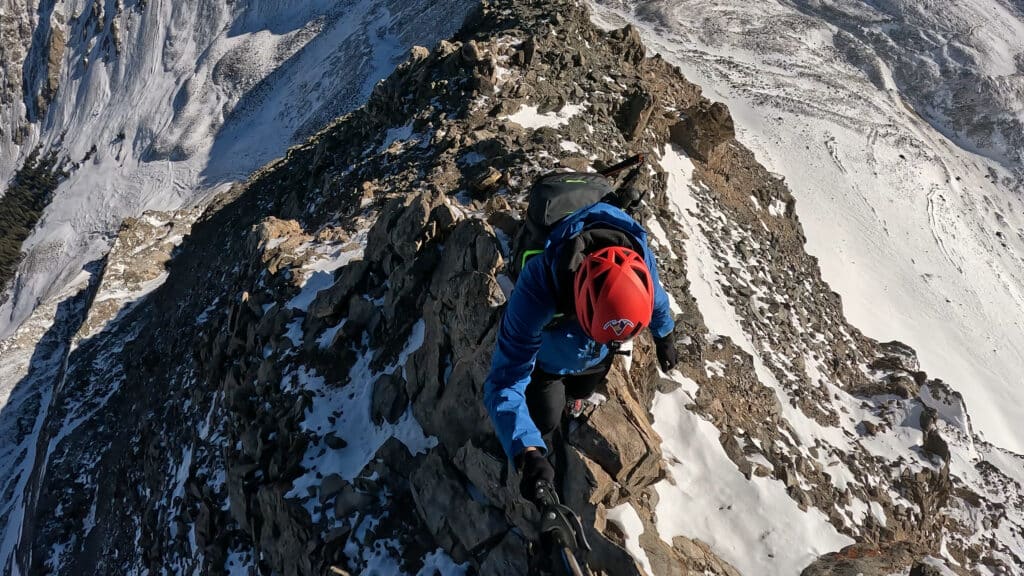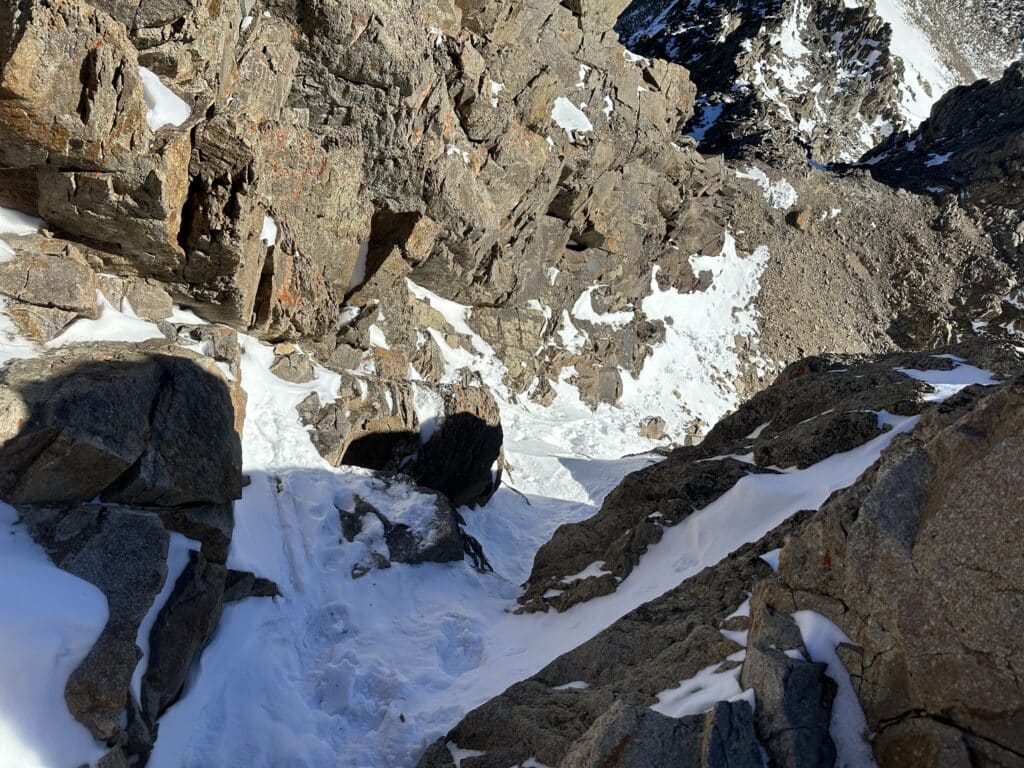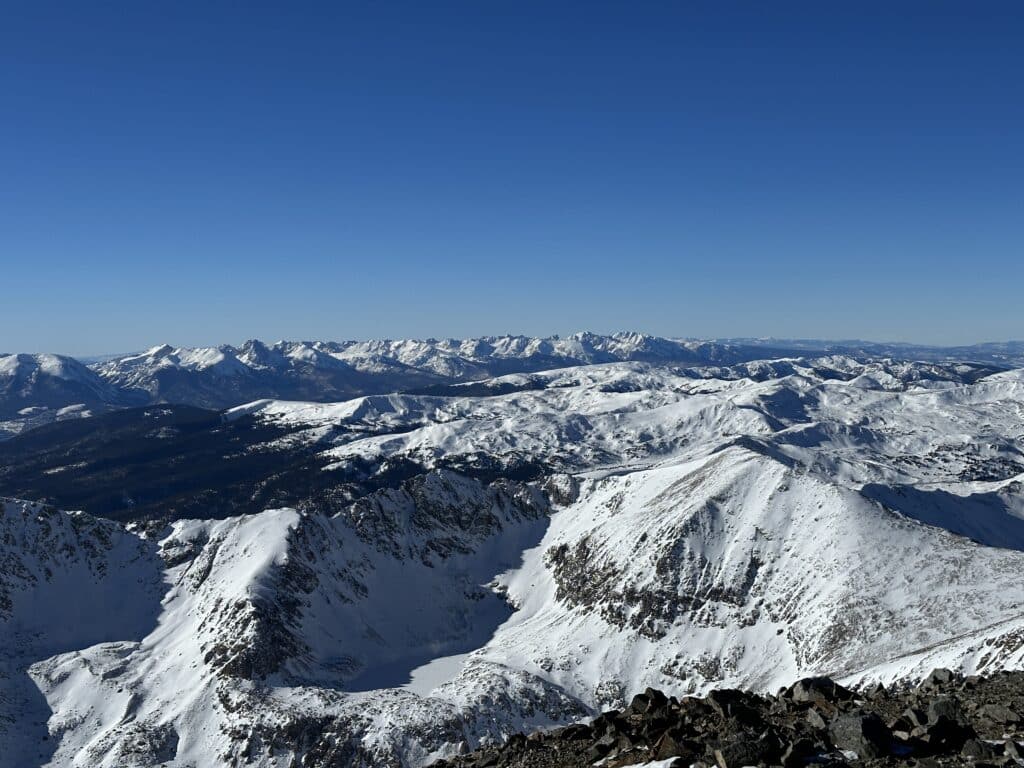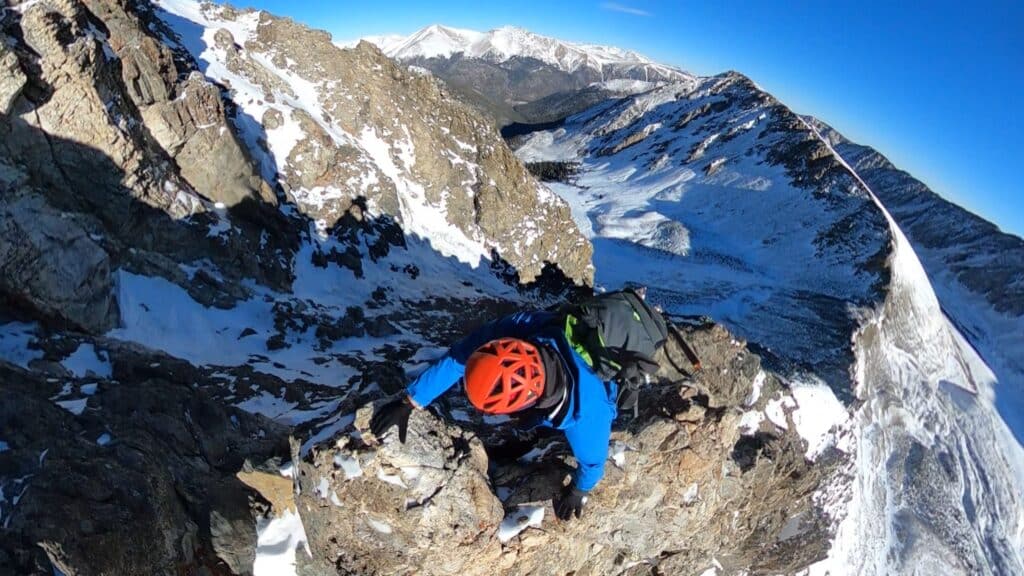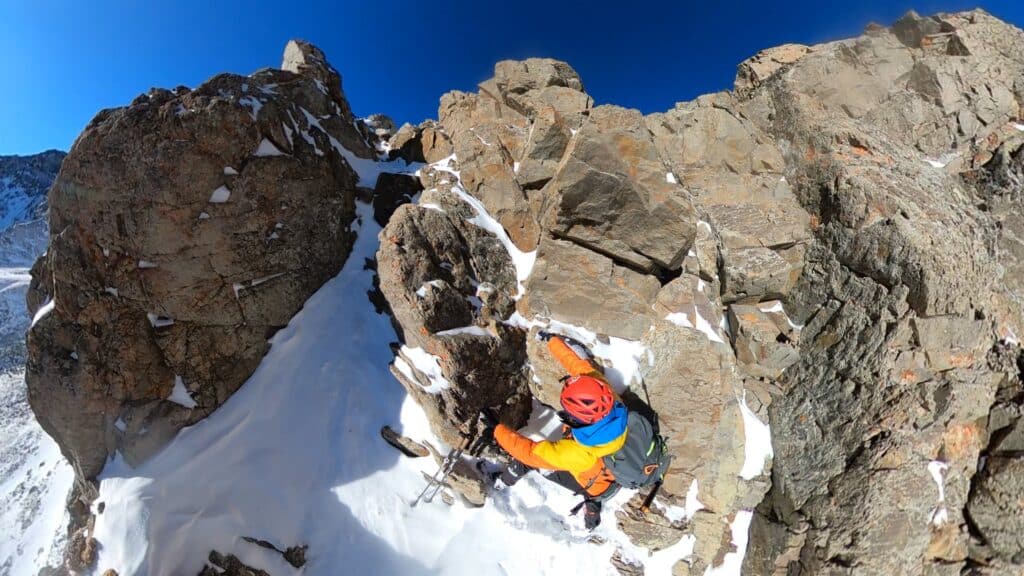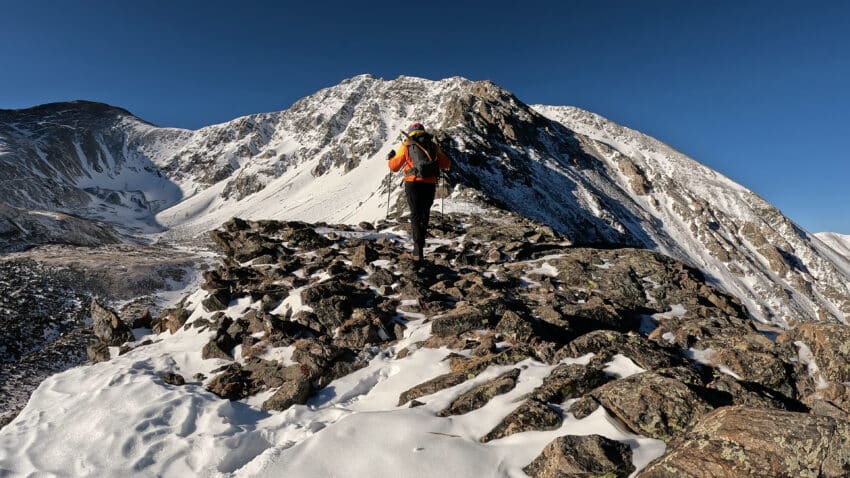
Torreys Peak Winter Hike Guide
A Torreys Peak Winter hike is a great way to hike the popular 14er without the crowds and with a stunning snow coated surrounding. Although Torreys Peak is a relatively “easy” hike in the summer, the winter months present a number of additional challenges including additional mileage, slower traveling on the trail and avalanche risk. It is possible to tackle both the standard route and Kelso ridge options of this mountain and adding 14er Grays Peak is also a fairly easy add on. Torreys Peak Winter hike is a great way to gain some experience on a winter 14er without a ton of additional gear or knowledge required.

Torreys Peak Winter Hike Guide
Torreys Peak Winter Rating: ★★★ (3/5 Stars)
Virtual Trail Guide: Torreys Peak via Kelso Ridge + Grays Peak Winter Hike
Distance: 12-14.5 Miles RT (12 starting at Grizzly Gulch, 14.5 Starting off I70)
Elevation Start: 9,784ft (Lower TH), 11,250ft (Upper TH)
Summit: Torreys – 14,267 ft
Total Elevation Gain: 3,560 ft
Estimated Time to Complete: 5-6 Hours RT
Difficulty: Moderate to Difficult (If taking Kelso Ridge) What does this mean?
Class: Class 1 (Standard route) / Class 3+ (Kelso Ridge)- What does this mean?
Season: November- May (Winter/snow conditions will likely not exist outside of this period)

Directions to Torreys Peak Winter Hike
Trailhead: Bakerville Exit I-70
Getting Here: From I-70, take the Bakerville exit and park here unless you know for 100% certainty that you can keep driving to the Grizzly Gulch road split. I would NOT drive past this intersection if there is snow on the road. It is very likely you will get stuck on the road which blocks the road from emergency services and residents of the area.
Parking: Free parking is available near the old house foundation off the Bakerville exit. Its quite common for people to spend multiple nights here in their vehicles. During winter months, there are no restrooms on this hike.
Fee/Reservations: None
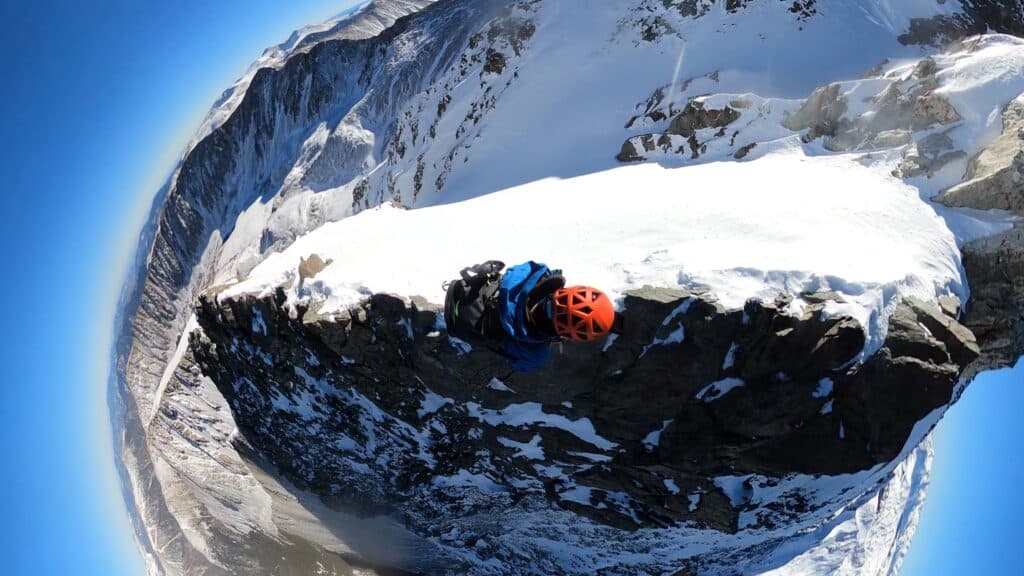
Summary
Dogs: Dogs are allowed on Grays Peak and Torreys Peak and it is not a terrible hike to bring your pet on. Be sure to bring water as there are no sources outside of the stream next to the parking area. Terrain-wise, the hike up to Grays Peak is almost all packed dirt but the ridgeline and hike up to Torreys Peak can be a bit rocky. I would not say its “tough” terrain for a dog’s paws, but just something to keep in mind if your dog is not used to hiking in the mountains. Please keep your dog on a leash and pack out any trash/poop from your hike.
Camping: During Winter months, camping spots in the area can be tough to come by due to snow levels. There are a few dispersed camping spots along the road which will be fairly obvious. Alternatively, if you wanted to spend a night at the trailhead in your car, that is usually not a problem so long as you are respectful and keep things sort of low key.
Make it a Loop: The two main options on this hike would be: taking the Torreys Peak winter standard route or taking Kelso ridge. The latter is a significantly more difficult hike that has many very dangerous sections and requires careful route finding + lots of exposure. The Torreys Peak winter route is much more straightforward. Either option can give you the ability to tag neighboring Grays Peak with minimal extra effort but does add mileage and some additional climbing.
Trail X Factors: Snow Levels & Avalanche Conditions
With any winter hike, snow levels are going to dictate a number of things: how far from the summer trailhead you start, how quickly you move and the route you must take to avoid or mitigate avalanche risk. Torreys Peak winter hike is no different. If you are taking Kelso ridge, snow will require you to travel extra carefully on the class 3 ridge to avoid cornices and a fall off the sometimes very narrow ridgeline.
If taking the standard route on Torreys Peak, there tends to be a cornice or series of cornices that form near the saddle between Grays Peak and Torreys. To avoid this, hikers must travel up Grays Peak a bit before heading back over to Torreys. Always check the avalanche forecast before you head out for a winter hike and have the proper gear (Beacon, Shovel, Probe) and knowledge when traveling in avalanche terrain (this hike).
Hike Tip(s): Torreys Peak winter hike is going to be MUCH different than the summer version. Be sure to check the wind and temperature while planning your day in addition to avalanche forecasts and conditions. Plan on a longer day, colder day and a 5+ mile hike (total) to get to and from the summer trailhead. You likely will need extra gear (snowshoes, crampons, microspikes etc.) and if you decide to travel up Kelso Ridge, please have the proper experience to tackle a narrow Class 3 snow covered ridge.
Best Views: In my opinion, any winter hike presents a much more beautiful view than the drier Summer or Fall months. The best views on this hike really start once you first get summit views of Torreys Peak and Grays. From the summit, views are incredible.

Torreys Peak Winter Hike Route
*For this hike, I took Kelso ridge and added on Grays Peak. I also parked at the Grizzly Gulch road split, saving about 2 miles off of a lower TH hike.
Winter Hike Gear List
- Winter Backpack
- Hiking/SkiPoles
- Headlamp
- Climbing Helmet
- Mountain Axe – Petzl EVO
- Mountain Axe – Black Diamond Raven – Great for Beginners
- Crampons
- Crampon Bag
- Snowboard Boot Crampons
- La Sportiva Mountaineering Boots
- Snowboard Boots
- Snowpants
- Gloves
- Microspikes
- Gaiters
- Optional/but not really: Avalanche Gear: Beacon, Probe, Shovel
- Optional: Snowshoes
- Optional: Skis or Splitboard
- Optional: Goggles
- Optional: Garmin inReach
- Optional: Garmin Fenix Watch
- Optional: GoPro, Joby Tripod, Selfie Stick, GoPro 360, Drone
- *Links included in this description might be affiliate links. If you purchase a product or service with the links that I provide I may receive a small commission. There is no additional charge to you.

